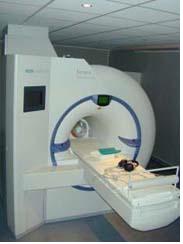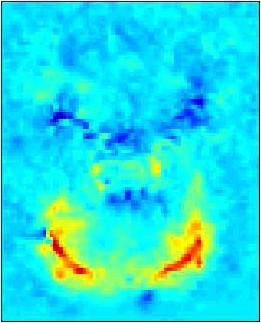fMRI Analysis
Neurovascular Coupling
Spatiotemporal Models

W.D. Penny and K. J. Friston.
Bayesian Treatments of Neuroimaging Data.
In K. Doya and I. Naguno, editors, The Bayesian Brain.
2006.
 Keyword(s): fMRI,
Dynamic.
[bibtex-entry] Keyword(s): fMRI,
Dynamic.
[bibtex-entry]
W. D. Penny,
J. Kilner,
and F. Blankenburg.
Robust Bayesian General Linear Models.
Neuroimage,
36(3):661-671,
2007.

W.D. Penny and K.J. Friston.
Mixtures of General Linear Models for Functional Neuroimaging.
IEEE Transactions on Medical Imaging,
22(4):504-514,
2003.

What aspects of neuronal activity does the BOLD signal (the signal underlying most fMRI studies) reflect ? And how is the BOLD signal related to the MEG or EEG signal ?
These papers provide evidence for the hypothesis that the BOLD signal increases as the Root Mean Square Frequency (RMSF) of the EEG. They also show that BOLD is dependent on both synaptic and spiking activity with the relative contribution changing as underlying cell populations increase their firing rate.
M. Rosa, J Kilner and W. Penny (2011).
Bayesian comparison of neurovascular coupling models using EEG-fMRI.
PLoS Computational Biology 7(6) e1002070.

M Rosa,
J. Kilner,
F. Blankenburg,
O. Josephs and
W. Penny.
Estimating the transfer function from neuronal activity to BOLD using simultaneous EEG-fMRI.
Neuroimage,
Jan 15, 2010; 49(4):1496-509.

Spatiotemporal Models
We have augmented standard fMRI time series models with spatial priors to provide neuroscientists with more sensitive detection tools. This allows them to find subtle neuronal activations that would otherwise be obscured in experimental noise.

The picture above shows bilateral activation of occipital cortex (in red) obtained using a
spatial wavelet prior. This provides much better resolution than the standard approach of smoothing the data.
My colleague Lee Harrison has used such methods to establish that anterior brain regions integrate information over longer time periods than posterior regions.
W. Penny,
G. Flandin,
and N. Trujillo-Barreto.
Spatio-temporal models for fMRI.
In K. Friston,
J. Ashburner,
S. Kiebel,
T. Nichols,
and W. Penny, editors, Statistical Parametric Mapping: The analysis of functional brain images.
Elsevier, London,
2006.
 Keyword(s): fMRI,
Spatial,
GLM.
[bibtex-entry] Keyword(s): fMRI,
Spatial,
GLM.
[bibtex-entry]
L M Harrison,
W Penny,
J Daunizeau,
and K J Friston.
Diffusion-based spatial priors for functional magnetic resonance images.
Neuroimage,
41(2):408-23,
2008.

L M Harrison,
W Penny,
G Flandin,
C C Ruff,
N Weiskopf,
and K J Friston.
Graph-partitioned spatial priors for functional magnetic resonance images.
Neuroimage,
43(4):694-707,
2008.

G. Flandin and W.D. Penny.
Bayesian fMRI data analysis with sparse spatial basis function priors.
NeuroImage,
34(3):1108-1125,
2007.
 
L. Harrison,
W.D. Penny,
J. Ashburner,
N. Trujillo-Bareto,
and K.J. Friston.
Diffusion-based spatial priors for imaging.
NeuroImage,
38:677-695,
2007.

W. D. Penny,
G. Flandin,
and N. Trujillo-Barreto.
Bayesian comparison of spatially regularised general linear models.
Human Brain Mapping,
28(4):275-293,
2007.

W.D. Penny,
N. Trujillo-Bareto,
and K.J. Friston.
Bayesian fMRI time series analysis with spatial priors.
NeuroImage,
24(2):350-362,
2005.
 
K.J. Friston and W.D. Penny.
Posterior probability maps and SPMs.
NeuroImage,
19(3):1240-1249,
2003.

|

